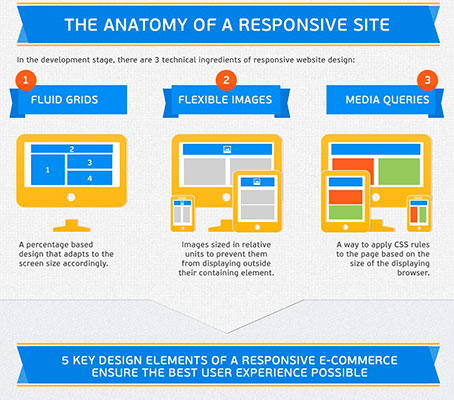Site Style Essentials: Tips For Structure A User-Friendly Website
Site Style Essentials: Tips For Structure A User-Friendly Website
Blog Article
Content Created By-Hovmand Neville
When it pertains to web site style, ensuring user-friendliness is key. From simply click the up coming internet site to structured navigating, every element plays an important duty in producing a site that deals with your audience's needs. Yet what about the better information that can make or damage a user's searching experience? Stay tuned as we discover some often-overlooked pointers that can boost your website's functionality to the following level, making it really stand out in the electronic landscape.
Significance of Responsive Style
Receptive layout is a crucial aspect of contemporary internet site growth. Ensuring your internet site is responsive ways that it can adapt to different display dimensions and devices, supplying a smooth experience for individuals.
With the enhancing use of smartphones and tablet computers to access the web, having a receptive design is necessary for reaching a bigger target market. It helps in improving individual experience by making your site very easy to browse and continue reading any type of tool.
Furthermore, receptive design can positively impact your online search engine positions, as online search engine like Google prioritize mobile-friendly websites. By having a receptive layout, you're additionally future-proofing your web site, as brand-new gadgets with varying display dimensions remain to emerge.
Simplify Navigation Framework
To improve user experience and assist in very easy access to information on your internet site, simplifying the navigation structure is vital. When developing your website, concentrate on developing a clear and intuitive navigating menu that aids site visitors find what they're searching for promptly.
Restriction the number of menu items to the fundamentals, organizing relevant pages with each other to prevent overwhelming users. ada website accessibility requirements detailed labels that clearly show the content of each page, making it much easier for individuals to understand where each link will certainly take them.
Think about executing dropdown menus for subcategories to avoid jumbling the primary navigation bar. Furthermore, consist of a search bar plainly on the web page for individuals who choose searching for details information.
Focus on mobile responsiveness in your navigation layout to make sure easy gain access to on all tools.
Maximize Page Lots Rate
Improving web page lots rate is critical for retaining visitors on your site. Slow-loading web pages irritate users and can bring about high bounce rates. To optimize web page load speed, begin by maximizing photos. Press images without jeopardizing top quality to lower their file dimensions.
In addition, allow internet browser caching to keep frequently accessed resources locally, quickening lots times for returning visitors. Minify CSS, JavaScript, and HTML documents by getting rid of unnecessary characters, comments, and format, improving load speed.
Think about making use of a material distribution network (CDN) to disperse your internet site's material throughout multiple servers worldwide, decreasing latency for users accessing your site from different areas. Last but not least, restrict the use of third-party scripts and plugins, as they can significantly impact tons times.
top seo agency
To conclude, by integrating receptive design, streamlining navigating, and optimizing web page tons speed, you can develop an easy to use site that appeals to a bigger target market and improves user experience. These essential elements make sure that site visitors can easily accessibility and navigate your website throughout different gadgets, resulting in enhanced involvement and fulfillment. By concentrating on these vital facets, you can construct a successful internet site that maintains customers coming back for more.
